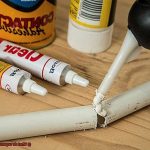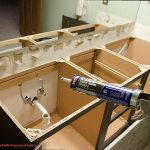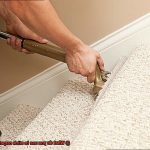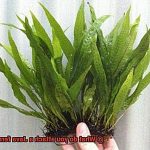Welcome to our blog, where we’re about to embark on an epic journey into the wild world of glue guns. These bad boys are like the superheroes of crafting, sticking things together faster than you can say “hot glue.” But here’s the burning question: is there anything a glue gun just won’t stick to? Well, wonder no more because we’ve got all the answers right here.
In this ultimate guide, we’re gonna push these glue guns to their limits and uncover their kryptonite. We’ll be exploring materials that make these sticky wonders go “nope,” from weird textures to unconventional stuff you wouldn’t even think of.
So whether you’re a busy parent trying to fix your kid’s broken toys or a home décor guru in search of fail-proof bonding solutions, this is the go-to resource that’ll blow your mind.
Imagine this: you’re knee-deep in a project, firing up your trusty glue gun, only to find out it’s playing hard to stick with a particular material. Talk about frustrating. But don’t sweat it. Our mission is to arm you with knowledge so you can tackle any project like a boss. Whether you’re a seasoned pro or just starting out in the world of glue guns, understanding their limitations will take your crafting game up several notches.
In the upcoming sections, we’ll dive deep into different materials – from the usual suspects to those hidden gems – and discover what makes them tricky for glue guns. We’re talking plastics, metals, fabrics, ceramics – even glass and rubber.
We’ll unravel the science behind adhesive magic, break down factors that mess with bonding success, and offer alternative solutions that’ll keep your projects stuck together like besties.
So if you’re ready to unlock the secrets of your glue gun’s arch-nemeses and learn how to conquer them, buckle up and get ready for a wild ride. We’re about to unleash a world of creative possibilities and drop some knowledge bombs that’ll blow your crafty little mind. Stay tuned for our upcoming guides as we embark on this sticky adventure together.
What is a Glue Gun?
Contents
In this article, we’ll explore the purpose, components, functionality, and different types of glue guns. Let’s dive into the world of this handheld device and discover why it is an essential addition to any creative toolkit.
Purpose and Components:
A glue gun’s core function is to melt solid adhesive and dispense it through a nozzle. It comprises three main components: a heating element, a trigger mechanism, and a glue stick chamber. When plugged into an electrical outlet, the heating element rapidly melts the glue stick placed in the chamber. The trigger mechanism allows users to control the flow of melted glue with a simple squeeze.
How It Works:
Glue guns utilize cylindrical glue sticks as their adhesive source. These rods are made of solid adhesive material and come in various sizes. Once the heating element melts the glue stick, it transforms into a liquid form ready for dispensing. The liquid adhesive quickly cools and solidifies upon contact with surfaces, creating a strong bond within minutes.
Different Types of Glue Guns:
Glue guns are available in different sizes and temperature ranges to suit various projects. Mini glue guns are compact and portable, perfect for delicate materials or small-scale projects. Full-size glue guns pack more power and are ideal for heavy-duty applications. Temperature-wise, low-temperature glue guns operate at around 250°F (121°C), suitable for heat-sensitive materials like foam or thin plastics. High-temperature glue guns operate at around 380°F (193°C) and provide robust bonds for materials such as wood, metal, or ceramics.
The Magic of Quick Drying:
One of the major advantages of using a glue gun is its rapid drying time. Unlike traditional adhesives that can take hours or days to fully cure, hot glue dries in a matter of minutes, allowing for immediate handling and bonding. This instant adhesion makes it perfect for securing fabrics, attaching embellishments, or even assembling small DIY projects on the spot.
What It Doesn’t Stick To:
While glue guns are versatile, there are some materials they may not adhere to effectively. These include oily or greasy surfaces, certain types of plastics, silicone, and extremely smooth or non-porous materials. It’s always recommended to test the adhesive on a small area before committing to a larger project.
Common Materials That Glue Guns Have Difficulty Sticking To
Glue guns, the beloved superheroes of the crafting world, have the power to bond materials together in an instant. But every superhero has a weakness, and glue guns are no exception. Today, we’re going to uncover the common materials that these mighty guns have difficulty sticking to.
First on our hit list is silicone. With its smooth and non-porous surface, silicone poses a challenge for glue guns. It’s like trying to attach a post-it note to a polished marble countertop – a task that requires some serious super strength.
Next up are certain plastics like polyethylene and polypropylene. These stubborn plastics resist adhesion due to their high melting point and poor adhesive properties. It’s like trying to win over someone who’s always cold and distant – not an easy feat.
Now let’s talk fabrics, specifically nylon and polyester. These fabrics often boast water or oil repellent finishes that create an impenetrable barrier between the fabric and adhesive. It’s like trying to hug someone wearing a suit made of bubble wrap – you just can’t get close enough for a firm bond.
Glass and metal surfaces also put up a fight against glue guns. Their smooth and non-porous nature makes it nearly impossible for adhesives to cling on. It’s like attempting to climb up a slippery slide – you’ll need some serious grip.
Last but not least, we have wood. While glue guns can triumphantly bond most types of wood, some woods contain natural oils or finishes that interfere with adhesive bonding. It’s like trying to stick something onto a freshly polished piece of furniture – it simply won’t stay put.
But fear not, fellow crafters. There are alternative adhesives and clever techniques that can conquer these challenges. Epoxy or cyanoacrylate (super glue) may be your secret weapons against silicone or certain plastics. Roughening the material’s surface or using a primer can also level the playing field for successful adhesion.
Silicone
Silicone is a versatile material that poses a challenge when it comes to sticking it with glue guns. This is because silicone has unique properties that make it difficult for adhesives to bond with its surface. First, silicone has a low surface energy, which means it repels most adhesives. Adhesives are designed to bond with surfaces that have higher surface energy, so silicone’s nonstick nature makes it challenging for glue gun adhesives to get a good grip.

Additionally, the smooth and nonporous surface of silicone adds to the difficulty. Adhesives rely on mechanical interlocking or chemical bonding to create strong bonds. However, the smoothness of silicone provides little opportunity for mechanical interlocking, and its nonporous nature limits the availability of chemical bonding sites.
However, there are solutions to this adhesive conundrum. Silicone-based adhesives, also known as RTV adhesives, are specifically formulated to bond with silicone surfaces. These super-powered adhesives contain a curing agent that reacts with moisture in the air to form a strong bond with silicone. They are your go-to choice when it comes to sticking it to silicone.
In addition to silicone-based adhesives, there are other techniques that can help improve adhesion. Surface preparation is key. Properly cleaning and degreasing the silicone surface can enhance adhesion. You can also roughen the surface using sandpaper or apply a primer specifically designed for silicone to give the adhesive a fighting chance.
Low Surface Energy Materials
Glue guns are versatile tools used for DIY projects, crafts, and repairs. However, they face a formidable challenge when it comes to bonding low surface energy materials. These materials, such as polyethylene, polypropylene, fluoropolymers like PTFE (commonly known as Teflon), and silicone, have unique properties that make them resistant to adhesive bonding. In this blog post, we will explore the characteristics of low surface energy materials and provide strategies for successful bonding using a glue gun.
The Slippery World of Low Surface Energy Materials:
Low surface energy materials, like polyethylene and polypropylene, may seem innocent with their wide range of applications in packaging, containers, and automotive parts. However, their low affinity for adhesives can frustrate glue gun users seeking a strong bond. Their smooth and nonporous nature hinders the adhesive from forming a reliable connection.
Fluoropolymers and the Teflon Challenge:
The superhero of low surface energy materials is PTFE (Teflon). This material’s extremely low surface energy is renowned for its non-stick properties in cookware and industrial applications. However, when it comes to glue guns, PTFE surfaces become an arduous battlefield. Bonding with PTFE can leave glue gun enthusiasts feeling defeated.
Silicone – The Slippery Superhero:
Silicone’s low surface energy makes it resistant to adhesion by glue guns. With its versatile applications in sealants, medical devices, and kitchen utensils, this slippery superhero poses a significant challenge for bonding.
Specialized silicone-based adhesives have been formulated as caped crusaders to conquer this adhesive conundrum. These adhesives contain a curing agent that reacts with moisture in the air, forming an unbreakable bond with silicone. Additionally, proper surface preparation, such as cleaning, degreasing, roughening, or applying a silicone primer, can enhance the chances of successful adhesion.
Teflon
Enter Teflon, the non-stick superhero that saves glue guns from adhesive chaos. In this blog post, we’ll explore how Teflon is used in glue guns and why it’s essential for keeping these handy tools clean and functional.
Teflon to the Rescue:
- Preventing Stickiness: The nozzle of a glue gun is where the magic happens. It’s where the glue sticks are melted and transformed into a flow of adhesive goodness. But, we don’t want the glue to stick to the nozzle itself – that’s where Teflon swoops in to save the day. By coating the nozzle with Teflon or incorporating Teflon components, we ensure that the hot glue glides off without leaving any unwanted residue.
- Non-Reactive and Low Surface Energy: Teflon’s superpowers lie in its non-reactive nature and low surface energy. When hot glue comes into contact with Teflon, its adhesive properties are minimized. The glue simply slides off, leaving the nozzle clean and free from any build-up that could affect its performance over time.
- Heat Resistant: Glue guns generate heat to melt the glue sticks, and Teflon can handle the heat like a true hero. Its resistance to high temperatures ensures that the coated nozzle can withstand the melting process without warping or degrading. This durability guarantees that your glue gun can be used repeatedly without any issues.
The Limitations:
While Teflon is a powerful ally, it’s important to acknowledge its limitations. Accidental adhesion can still occur based on factors such as glue type, temperature settings, and duration of contact. However, Teflon significantly reduces the chances of sticky situations happening and makes cleaning the glue gun a breeze.
Certain Types of Plastics
Fear not. In this blog post, we’ll delve into the enchanting world of plastics and uncover which ones pose compatibility issues with our beloved glue guns. So, grab your safety goggles and let’s take the plunge into this sticky conundrum.
The Glue Gun:
Imagine a tool that wields the power to transform solid glue into a molten adhesive that sticks like magic. That’s precisely what a glue gun does. It’s a crafting superhero that effortlessly bonds materials like wood, fabric, and metal, making it an essential companion for all your creative endeavors.
Types of Plastics:
Plastics are extraordinary materials that come in endless shapes, sizes, and vibrant hues. However, not all plastics are created equal when it comes to harmonizing with glue guns. Let’s meet a few of the stubborn ones:
- Polyethylene: This versatile plastic is commonly found in everyday items such as plastic bags and containers. Unfortunately, its low surface energy renders it a challenging candidate for adhesive bonding.
- Polypropylene: From food containers to car parts and even medical devices, polypropylene is everywhere. However, its low surface energy akin to polyethylene makes it resistant to forming strong bonds with glues.
Compatibility Issues:
Now that we’ve identified the plastics that cause headaches when paired with glue guns, let’s explore why they refuse to play nice:
- Low Surface Energy: Plastics like polyethylene and polypropylene possess low surface energy, making them less receptive to adhesive bonding. It’s like trying to strike up a friendship with someone who simply isn’t interested in socializing.
- Toxic Fumes: Certain plastics, such as polyvinyl chloride (PVC), emit harmful fumes when subjected to high temperatures. Therefore, it’s crucial to steer clear of using glue guns on PVC or any plastic known to release toxic chemicals. Safety must always take precedence.
Potential Solutions:
Alright, crafters, now that we know which plastics may not be best buddies with our glue guns, let’s explore some strategies to overcome this sticky situation:
- Specialized Glue Sticks: For troublesome plastics like polypropylene, fret not. There are specialized glue sticks available that possess the unique capability to bond with these challenging materials. These remarkable sticks will be your secret weapon.
- Test, Test, Test: When in doubt, put it to the test. Before embarking on a major project, it’s wise to experiment on a small area of the plastic surface with your glue gun. This way, you can determine if a strong bond forms or if an alternative solution must be sought.
Oily or Greasy Surfaces
Today, we’re delving into the perplexing realm of oily or greasy surfaces and their impact on glue. Prepare to be amazed as we unravel the mysteries behind this slippery conundrum.
Let’s begin by exploring the nature of glue. Its purpose is to forge a robust connection between two surfaces, but when faced with oily or greasy adversaries, it encounters a formidable foe. Oils and grease act as insidious barriers, thwarting the glue’s attempts to establish contact and form a secure bond. Picture trying to unite two magnets with a layer of butter in between – an arduous task, indeed.
But why does this predicament occur? Well, oils and grease possess a knack for sabotaging the drying process of glue. You see, glue relies on the evaporation of moisture to solidify properly. However, when oil or grease enters the equation, they impede efficient moisture evaporation, resulting in feeble bonds as reliable as wet noodles.
Now, let’s explore some examples of oily or greasy surfaces that can give your glue gun a run for its money. We’re talking plastic containers tainted with leftover oil or grease, metal surfaces coated in lingering oils, and even certain fabrics sullied by oily substances. These crafty culprits can throw quite the wrench into your artistic endeavors.
There are strategies to overcome this challenge. Firstly, it’s imperative to employ specialized adhesives explicitly designed for bonding with oily or greasy surfaces. These remarkable concoctions often contain solvents or chemicals that dismantle oils and grease, facilitating superior adhesion.
Secondly, ensure your surface is immaculate before applying any glue. Utilize degreasers or rubbing alcohol to eliminate all residue. If necessary, gently roughen the surface with sandpaper or a file to enhance grip opportunities for the glue.
Lastly, always conduct a small-scale test on an inconspicuous area before committing to the entire project. This precautionary measure will ascertain the adhesive’s efficacy, preventing sticky mishaps from befalling your masterpiece.

Waterproof or Water-Resistant Fabrics
Waterproof and water-resistant fabrics are designed to repel water and withstand moisture, but they have distinct differences. Waterproof fabrics are specially engineered to prevent water from penetrating through the material. They are commonly used in outdoor gear like raincoats, tents, and backpacks, as well as in medical and industrial applications. On the other hand, water-resistant fabrics are designed to resist the penetration of water to a certain degree. While they may not completely repel water like waterproof fabrics, they can withstand light rain or water splashes without getting soaked.
When it comes to using adhesives on these types of fabrics, it’s important to consider the type of glue being used. Most standard hot glue sticks are not formulated for bonding with waterproof or water-resistant materials. The special coating or treatment on these fabrics that makes them resistant to water can also interfere with the adhesive properties of hot glue. While hot glue may initially stick to these fabrics, it may not provide a reliable bond over time, especially when exposed to moisture or frequent washing.
However, there are specialty hot glue sticks available that are specifically designed for use on waterproof and water-resistant fabrics. These glue sticks have a stronger adhesive formulation that is more compatible with the unique properties of these materials. It’s crucial to read the instructions and specifications provided by the manufacturer to determine their compatibility with these fabrics. Testing a small inconspicuous area before applying the glue to the entire surface is also recommended.
In addition to hot glue, there are other adhesive options for waterproof and water-resistant fabrics. Fabric glue and seam sealants are specifically designed to work with these materials, providing a more durable and long-lasting bond. These alternatives are particularly beneficial when working on projects that will be exposed to moisture regularly.
Certain Metals
Glue guns are incredibly useful tools for bonding materials together, but when it comes to certain metals, they can present some challenges. Non-porous metals like stainless steel, aluminum, and copper have smooth surfaces that do not provide enough texture for the glue to form a strong bond. As a result, the adhesive simply slides off the metal, leading to weak or failed bonds. Additionally, metals that are coated or treated with anti-corrosive substances or paints can also resist glue gun adhesion. These coatings create a barrier between the metal surface and the glue, preventing proper bonding. Even if the glue does stick initially, it may not hold up over time.
Another factor to consider is the temperature resistance of the glue. Some metals, such as steel or iron, can become extremely hot when exposed to high temperatures. Glue guns typically operate at high temperatures, which means that the adhesive may not be able to withstand the heat of these metals. This can result in weak bonds or even melting of the glue.
To overcome these challenges, there are specialized adhesives available that are specifically designed for bonding metals. Epoxy and cyanoacrylate (super glue) are two common options that offer superior bonding strength compared to regular glue gun adhesives. These adhesives are formulated to provide excellent adhesion on metal surfaces and can withstand high temperatures.
In addition to using specialized adhesives, preparing the metal surface can also improve the chances of successful bonding with a glue gun. Roughening the surface using sandpaper or a wire brush creates a textured surface that provides more grip for the adhesive. This roughened surface allows the glue to adhere more effectively, ensuring a stronger bond.
However, it’s important to note that in some cases, mechanical fasteners such as screws, nails, or rivets may be a more suitable option for securing metal pieces together. These fasteners provide a reliable and durable bond that can withstand the stresses and strains that certain metals can impose. While glue guns are versatile tools, it’s crucial to understand their limitations when it comes to bonding certain metals and to consider alternative adhesive options or mechanical fasteners for optimal results.
6Lf51lg3drY” >
Also Read: What are Glue Sticks Made of? – Glue Things
Conclusion
Unfortunately, the glue gun does not adhere to certain surfaces. It’s important to know what these surfaces are in order to avoid any mishaps or frustrations during your crafting projects. So, let’s delve into the realm of what a glue gun simply refuses to stick to.
Firstly, we have the notorious non-stick surfaces. These include materials like silicone, Teflon, and wax paper. The slick nature of these surfaces repels the adhesive properties of the glue gun, making it ineffective in creating a strong bond.
Next up on our list are smooth and oily surfaces. Think plastic or vinyl – they’re just too slippery for the glue gun’s grip. Additionally, if you’re working with an oily substance like grease or oil-based paint, don’t expect the glue gun to work its magic on those either.
Moving along, we encounter heat-sensitive materials. Delicate fabrics such as silk or satin can easily be damaged by the high temperatures of a glue gun. It’s best to opt for alternative methods when working with these types of materials.
Another category that poses a challenge for our trusty adhesive companion is porous materials. Wood, foam, and some types of fabric fall into this group. The porous nature of these materials absorbs the hot glue before it has a chance to solidify and create a bond.
Lastly, there are certain types of plastics that simply won’t cooperate with a glue gun. Polyethylene and polypropylene are two examples that give our adhesive friend a hard time due to their low surface energy.
In conclusion, while the glue gun is undoubtedly a versatile tool for many crafting endeavors, it does have its limitations when it comes to sticking power. Non-stick surfaces, smooth and oily materials, heat-sensitive fabrics, porous substances, and specific plastics all prove challenging for this mighty adhesive weapon.






